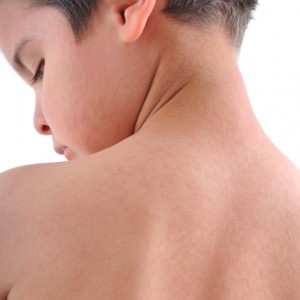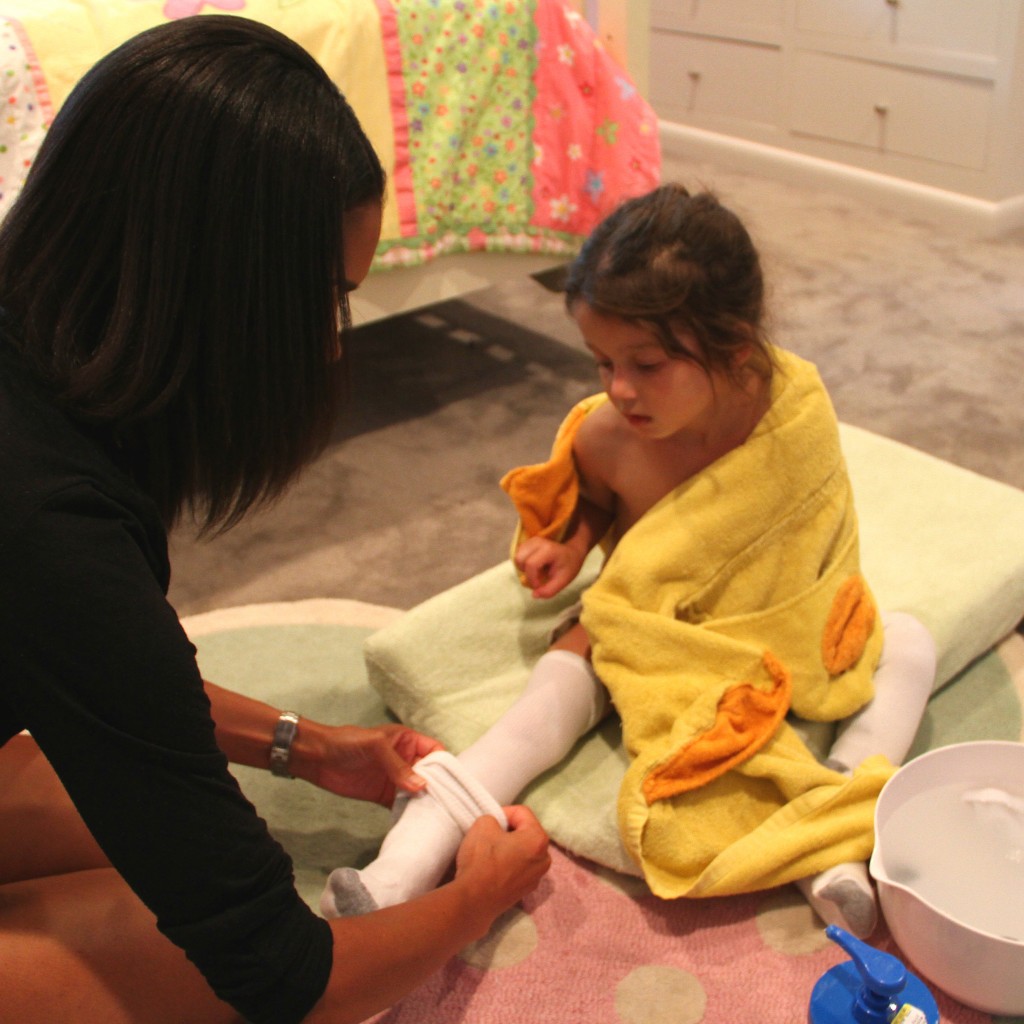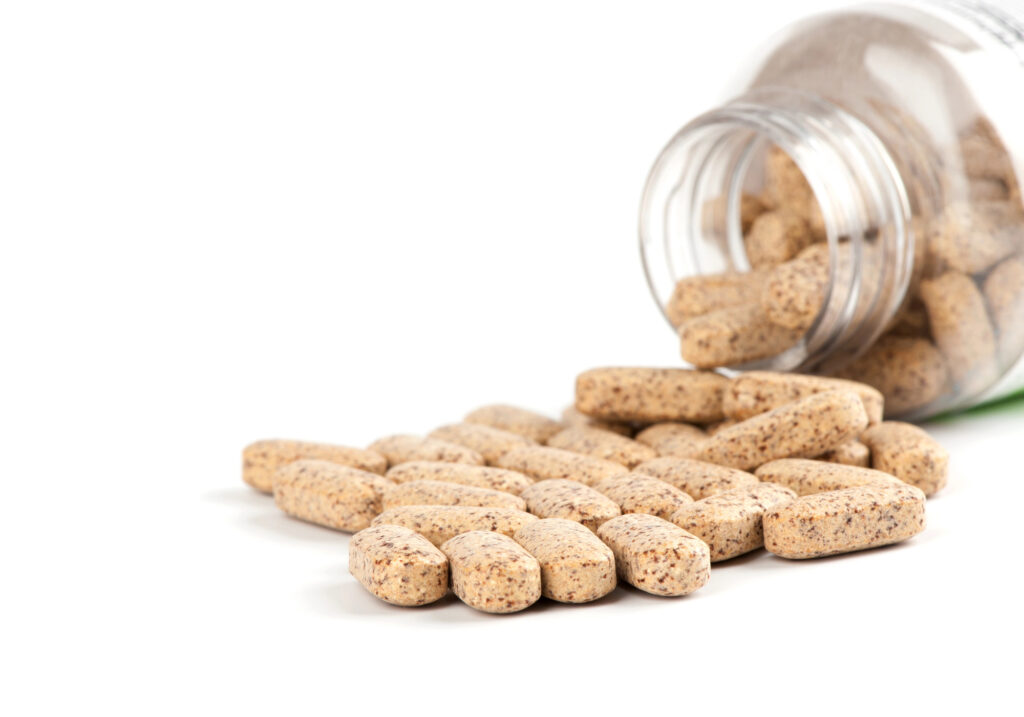Parents are very reluctant to use steroids on their children’s atopic dermatitis and eczema, which is why they often request alternative therapies. Wet wrapping is one option. From a practitioner perspective, wet wrapping to address atopic dermatitis and eczema seems like a fairly simple and straightforward approach. But does it work? We introduce you to Lucie, a preschooler with chronic eczema and how her condition prompted the largest study ever conducted on wet-wrap therapy. Experts at National Jewish Health in Denver saw a dramatic improvement in symptoms without traditional therapies like antibiotics, steroids or immunotherapy drugs.

“We took a step up, step down sort of approach to managing their symptoms in this study,” said Boguniewicz. “We would apply the wet wraps two to three times a day, depending on the severity of the case, then we would taper the therapy down and only treat the affected areas as time went on,” said Boguniewicz. “Over roughly four days we saw dramatic improvements.” Click through to read more and see videos on advice from National Jewish Health on how implement a successful wet wrap.
Seventy-two children with a mean ± SD age of 4.6 ± 3.12 years were included. By using a paired t test, the SCORAD at admission and at discharge showed significant differences in mean ± SD values, of 49.68 ± 17.72 versus 14.83 ± 7.45, respectively (t, 18.93; df, 71; P < .001). None of these patients required systemic immunosuppressive therapy during the treatment program. By using a previously published parent-administered outcomes tool, patients were shown to maintain clinical improvement of their AD 1 month after discharge.

“When these children arrived their mean score was right around 50, so they were severe cases,” said Boguniewicz. “When they left, their mean score was less than 15. That kind of improvement, in just a short amount of time, was very, very dramatic,” he said.
Lucie Karazim, a 4-year-old from Indianapolis, IN, was one of the children who took part in the study. Diagnosed with eczema just four months after she was born, her mother Heather says they saw several doctors and specialists trying to find relief. “It seems like the more doctors we saw, the more we were just adding medications,” said Karazim. “We got to the point where we were taking some pretty potent steroids and still nothing was fixing the problem.”
In 2012, Lucie was referred to National Jewish Health, and her mother volunteered her for the wet wrap study. “It was very labor intensive the two weeks we were at National Jewish Health, but it was worth it,” she said. “The treatment just makes sense, and the best part is, we were able to back off a lot of our medications when we left and established a new baseline for her,” said Karazim.
But Dr. Boguniewicz cautions that there is a technique that needs to be followed in order for wet wrap therapy to work. He warns that parents should not try this on their own because overuse can do more harm than good. He advises parents to talk with a specialist first.








